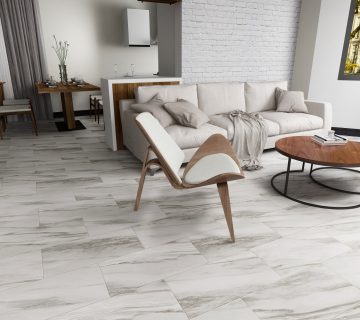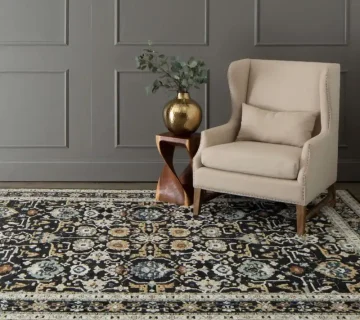One of the challenges faced when turning the house’s basement into a living space is the basement’s flooring. Bare concrete is usually tough, and doesn’t lead to creating a warm and welcoming space. Fortunately, there are several ways to install the basement flooring, which will be practical and appealing, without the need to make major structural changes. Here are some ideas that will help you to choose comfortable and welcoming basement floors.
In most basements, moisture is a common problem. When it comes to installing the floor, there is a need to solve this problem before any type of flooring is settled. The easiest way to reduce moisture in the basement is to apply a sealing layer of insulation in walls and floor. In some locations, installation of pumps that will help drain support of the infiltrations surrounding excess soil moisture may also be required. Only once the moisture problem is under control, you should proceed with the installation of a floor over the existing concrete basement floor.
After the sealing of concrete and moisture control, it’s still often a good idea to lay down a layer of a certain type of waterproof membrane on the floor. That is if you decide on wood or carpet. A floating wood floor is especially nice because it’s warmer, quieter and easier on your feet. Floating floors are called floating because they are not anchored in to the existing floor. They are a snap together system that lay on top of a finished or treated underlayment.
With the floor properly prepared, it is time to take into account various basement floor options. You have durable tile flooring as an option. Tile can be chosen from all different sizes, layouts, textures and colors. Tile is impervious to any water that might come in contact with it making it easy to clean. As opposed to wood that will have to sometimes be replaced if water contacts it for too long. Best of all, it is possible to replace dirty or damaged tile with relative ease. This makes tile a good fit for the basement area where there is a lot of traffic.
Together with tiles, a wood laminate floor is also a viable option. Laminate is also somewhat resistant to moisture and will also work well with a combination of insulation and plywood. Many types of laminate flooring have a design that includes a simple configuration. Sections snap together easily and make it possible to install the basement’s floor quickly. As a bonus, laminate flooring requires nothing more than a routine cleaning to look fresh for many years.
Linoleum basement flooring is another way to go. Large rolls of linoleum can be rolled out and easily installed by qualified flooring contractors. Although not as durable as tile, linoleum is often a less expensive option for basement floors. If the basement has a some what limited traffic, linoleum will last for a while equitably.
Finally, there is the option to cover the basement with carpet. In control climates where humidity is relatively easy carpet often works very well. However, if the humidity is a constant problem, it’s just a matter of time before it starts to bloom underneath the carpet. The end result will be a constant smell that will remind everyone of a wet dog in the house. Only go with carpet if you are sure that the moisture can be controlled in a consistent manner and that an accumulation of mold and moisture under the carpet is not likely.



